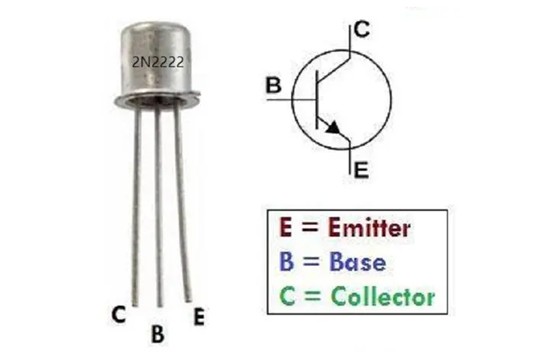The 2N2222 is one of the most popular NPN bipolar junction transistors (BJTs) in electronics prototyping. It is widely used due to its affordability, reliability, and ease of use in a wide range of applications—from signal amplification to low-power switching.
In this article, we’ll look at how to effectively integrate the 2N2222 transistor into your PCB prototype design, including its key specifications, typical use cases, and layout tips.
Why Choose the 2N2222 for Prototyping?
The 2N2222 is ideal for general-purpose applications. Its features include:
- NPN transistor
- Collector current up to 800 mA
- Collector-emitter voltage up to 40 V
- Power dissipation around 500 mW
- Transition frequency up to 250 MHz
- Available in both TO-18 (metal) and TO-92 (plastic) packages
This combination of high current capacity and fast switching speed makes it especially suitable for microcontroller-driven switching, LED drivers, small motors, and analog signal amplification.
Common Applications in PCB Designs
- Switching Loads with Microcontrollers
The 2N2222 is commonly used as a switch to control devices like LEDs, motors, or relays. A digital pin from a microcontroller sends a small current to the base, which allows a much larger current to flow between the collector and emitter, activating the load. - Signal Amplification
In audio or sensor circuits, the transistor is used in common-emitter configurations to amplify weak signals. - Pulse Width Modulation (PWM) Control
It can be used to modulate the power delivered to a device based on PWM signals from a microcontroller. - Level Shifting and Buffering
The 2N2222 can interface between low-voltage logic signals and higher-voltage devices by acting as a buffer or level shifter.
Design Considerations for PCB Layout
When incorporating the 2N2222 into your prototype PCB, keep the following best practices in mind:
- Current Limiting Resistor
Use a base resistor (typically 1kΩ–10kΩ) to prevent excessive current from damaging your microcontroller or the transistor. - Proper Orientation
Double-check the pinout (Emitter, Base, Collector) based on the specific package version you’re using. TO-92 packages are often E-B-C from left to right when viewed from the flat side, but datasheets should be referenced. - Thermal Management
While the 2N2222 doesn’t generate much heat under normal operation, ensure proper copper area or heat sinking if switching high current. - Trace Width
Use appropriate trace widths for the collector-emitter path, especially if you’re drawing more than 200 mA.
Equivalent Transistors
If the 2N2222 is out of stock or you need alternatives, several equivalent models offer similar performance:
- PN2222 / PN2222A – Plastic version, widely available
- MPS2222A – Nearly identical specs, from Motorola
- BC337 – European alternative, lower frequency
- 2N2219 – Similar specs in a metal can with higher power dissipation
- KSP2222A – Korean-manufactured equivalent
- S8050 – Common in Asia, good for basic switching
Always review datasheets to confirm voltage, current, and gain parameters match your application.
Testing Tips During Prototyping
- Verify base-emitter and collector-emitter junctions with a multimeter.
- Test switching behavior by connecting the base to a GPIO pin and observing output load activation.
- Observe heat generation under load conditions—use thermal cameras or sensors during evaluation.
- Consider circuit simulation using SPICE or similar tools before committing to PCB fabrication.
Conclusion
The 2N2222 is a staple component in prototyping and production-level PCB designs. It provides a robust balance of performance and affordability, making it ideal for both analog and digital circuits.
With proper biasing, layout, and testing, integrating the 2N2222 into your PCB prototype design can improve the reliability and flexibility of your circuit. Whether you’re switching, amplifying, or buffering signals, this classic NPN transistor remains a dependable choice for engineers and makers alike.


1 thought on “Integrating the 2N2222 Transistor in Your PCB Prototype Design”
Comments are closed.